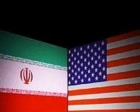International Tribunal Spotlight:
IRAN - UNITED STATES CLAIMS TRIBUNAL
 Given
the current state of turmoil in relations between Iran and
the United States, it is easy to overlook the fact that
the two governments have actually worked together on the
Iran – United States Claims Tribunal in a manner deeply
respectful of the rule of law for the past twenty-seven
years. As Mohammad Hossein Zahedin Labbaf, Iran's senior
representative at the Tribunal stated in 2000: “Both
governments … have done their best not to allow any
political cloud to be cast on the functioning of this tribunal,
which has to operate … as a peaceful, principled and
civilized means of resolution of differences.”
Given
the current state of turmoil in relations between Iran and
the United States, it is easy to overlook the fact that
the two governments have actually worked together on the
Iran – United States Claims Tribunal in a manner deeply
respectful of the rule of law for the past twenty-seven
years. As Mohammad Hossein Zahedin Labbaf, Iran's senior
representative at the Tribunal stated in 2000: “Both
governments … have done their best not to allow any
political cloud to be cast on the functioning of this tribunal,
which has to operate … as a peaceful, principled and
civilized means of resolution of differences.”
The Iran – United States Claims Tribunal (the Tribunal) was established in 1981 as one of the measures taken to resolve the diplomatic crisis between Iran and the United States. The crisis famously reached its peak on November 4, 1979 when a group of Iranian students took control of the U.S. Embassy in Tehran, detaining 52 U.S. nationals until January 20, 1981. The United States subsequently froze Iranian assets over which it had jurisdiction. On January 19, 1981 the United States and Iran, with the intermediary assistance of the government of Algeria, released the “Algiers Declarations” in order to end the crisis. The first of the two declarations, the “General Declaration,” addressed the commitments to be made by both sides, including Iran negotiating the release of the hostages and the United States unfreezing Iranian assets.
Both countries agreed to nullify domestic court proceedings between their governments and private citizens with respect to financial claims. This final item was particularly meaningful because shortly after the beginning of the crisis, U.S. courts transferred a large portion of the frozen Iranian funds to U.S. nationals as compensation. The “Algiers Declarations” resulted in a reversal of all such decisions and settlements.
The termination of domestic litigation did not mean termination of existing claims. The pending commercial claims by U.S. nationals against Iranian state enterprises required adjudication. Thus, the second of the two declarations, known as the “Claims Settlement Declaration,” established the Iran – United States Claims Tribunal. Article VII of the “Claims Settlement Declaration” states: “Claims referred to the arbitration Tribunal shall… be considered excluded from the jurisdiction of the courts of Iran or of the United States.”
The jurisdiction of the Tribunal extends to five different areas:
1. Claims of U.S. nationals against Iran;
2. Claims of Iranian nationals against the United States;
3. Claims between Iran and the United States which relate to the purchase and sale of goods and services;
4. Disputes between Iran and the United States over the interpretation and/or performance of the “Algiers Declarations;”
5. Claims between Iranian and U.S. banking institutions.
(Note: Claims of the hostages and general tort claims are expressly excluded from the jurisdiction of the Tribunal. Claims of the Iranian government against U.S. nationals were deemed to be outside the jurisdiction as well.)
 The
Tribunal held its first meeting on July 1, 1981 in the Peace
Palace, which already housed the Permanent Court of Arbitration
and the International Court of Justice. In April 1982 the
Tribunal moved to its own location in The Hague. Nine arbitrators
sit on the Tribunal. Both Iran and the United States appoint
three arbitrators. The remaining three members are appointed
by the six Iranian and U.S. arbitrators. If the six country
members are unable to agree, the Secretary-General of the
Permanent Court of Arbitration can designate an “appointing
authority” to name the final three arbitrators.
The
Tribunal held its first meeting on July 1, 1981 in the Peace
Palace, which already housed the Permanent Court of Arbitration
and the International Court of Justice. In April 1982 the
Tribunal moved to its own location in The Hague. Nine arbitrators
sit on the Tribunal. Both Iran and the United States appoint
three arbitrators. The remaining three members are appointed
by the six Iranian and U.S. arbitrators. If the six country
members are unable to agree, the Secretary-General of the
Permanent Court of Arbitration can designate an “appointing
authority” to name the final three arbitrators.
There is no requirement in the Claims Settlement Declaration that the final three arbitrators come from a third-country, but such has always been the case. The current “third-country” arbitrators are from Finland, Poland, and Italy. The arbitration process is structured such that either the Full Tribunal or one of three three-member Chambers will hear a particular case. The Full Tribunal handles all cases between the governments of Iran and the United States in addition to specific cases referred to it by one of the three Chambers.
As an international arbitral tribunal, the Iran – United States Claims Tribunal is different from the more well-known international criminal courts and tribunals. These courts and tribunals conduct formal court proceedings in which a judge or judges hand down a decision to be enforced, a decision with which one party may strongly disagree. However, when parties bring their claims before an arbitral tribunal, they agree to be bound by the final decision. A key point is that the parties, through a contract, agree in advance to bring their dispute before an arbitral body. As a result, the Tribunal escapes the “enforceability” problem often seen with traditional court proceedings. In addition, the Tribunal operates in accordance with the UNCITRAL (U.N. Commission on International Trade Law) Rules of Arbitral Procedure, adopted by UNCITRAL in 1976 as a means of standardizing arbitral proceedings.
Iran and the United States equally split the expenses of the Tribunal. The countries separately manage payments of awards. Iran established a Security Account at the Settlement Bank of the Netherlands to make award payments in favor of U.S. claimants. All American claimants have received full payment of awards; more than $2.5 billion in awards has been given to U.S. nationals and companies. Roughly $1 billion has been awarded to Iran and Iranian parties, but the Tribunal does not trace those transactions because there is no equivalent U.S. account for payment of awards.
The Tribunal does not have an intended completion date, but its jurisdiction is a function of chronology. The Tribunal only hears claims that were filed on or before January 19, 1982. As a result, the number of claims is finite. With respect to private claims, 965 “large claims” for amounts exceeding $250,000 and 2782 “small claims” for amounts less than $250,000 were filed before the January 19, 1982 deadline. In addition, 69 “B” cases involving direct disputes between the governments of Iran and the United States were also filed before the deadline.
There is no statute of limitations for disputes between the governments relating to the interpretation of or compliance with the “Algiers Declarations.” As of April 2004 the Tribunal case census counted 33 such “A” cases. The most recent, Case No. A33, was submitted by the U.S. government as claimant on October 15, 2001.
The Tribunal has decided virtually all of the claims put before it, although 13 “A” claims and 3 “B” claims are still pending. Two of the remaining “B” cases are disputes between Iran and the United States over contracts made under the United States Military Sales program that involve claims of billions of dollars. Such economically massive and politically sensitive cases between the governments had been overlooked during the 1980s and early 1990s in the interest of handling the more manageable private claims. The Tribunal now finds itself face to face with those cases that will undoubtedly prove to be most challenging to resolve.
Despite the difficulties the Tribunal will encounter as it tries to complete its mission, the organization has been both a success and a trailblazer in the arena of public international law, specifically commercial law. It was the first time a Western country and a non-Western country worked together in such a multi-claims institution. The Tribunal has been one of the primary contributors to the success of the UNCITRAL Rules. Various international tribunals are now citing precedents established by the Iran – United States Claims Tribunal in their decisions. As Judge Charles Brower, one of the Americans on the Tribunal noted: “It seems assured that the Tribunal…will in turn have inspired, and continue to inspire, future international claims institutions.”
by James G. Apple, Co-Editor, International Judicial Monitor and President, International Judicial Academy; and Christine E. White, International Judicial Academy
